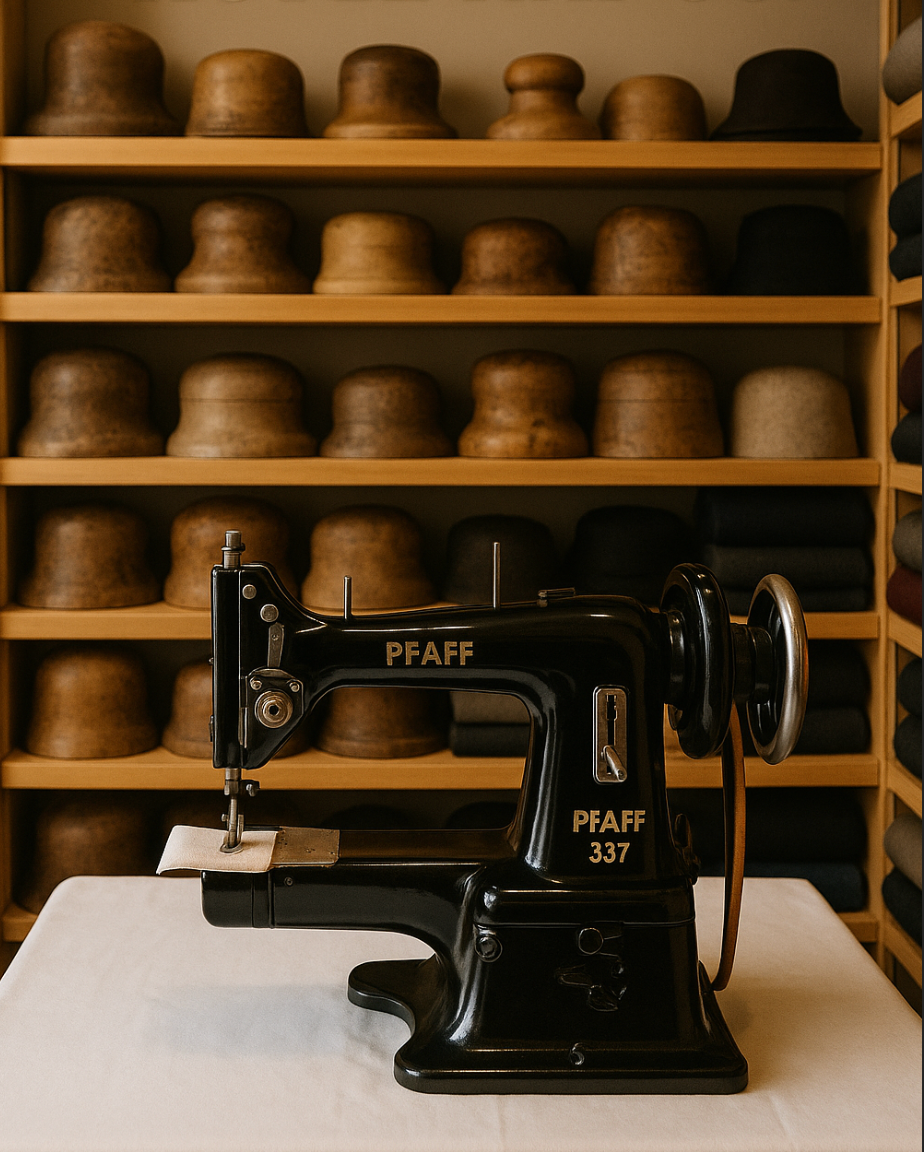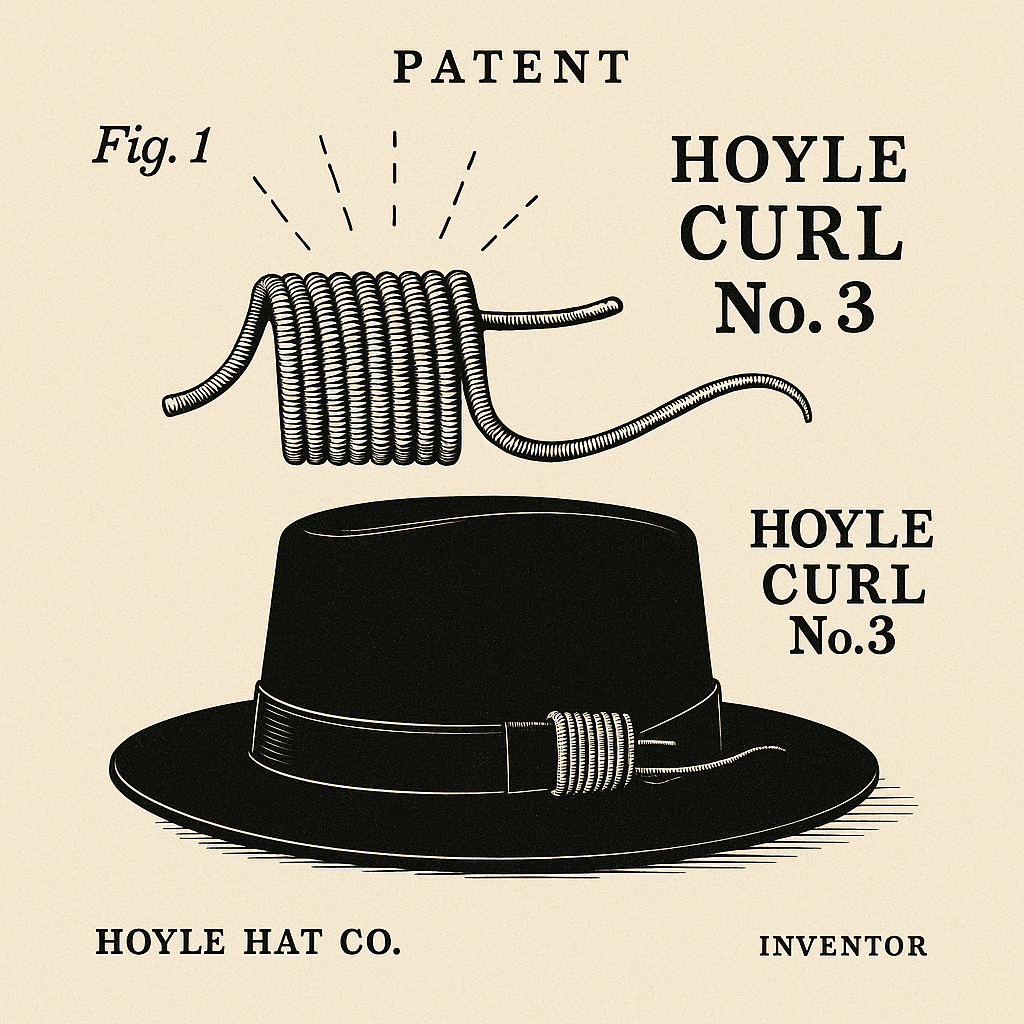
The Art of Hat Blocking by Hoyle Hat Co. | Handmade Hats in Seattle
The Art of the Block, Where Every Fine Hat Begins
By Michael Patrick Hoyle, Founder of Hoyle Hat Co.
There’s a moment, just before steam rises and felt yields, when the hatmaker stands at the edge of creation, waiting for wool or fur felt to soften, for time to return to his hands, and for the form to come to life. This is the beginning of hatmaking. This is the block, the sacred first step where raw form becomes future elegance.
Before brim or band, before lining or stitching, there is only the block. And in my atelier in downtown Seattle, we still do it the old way, by hand, by feel, and by fire.

What Is Blocking?
To the untrained eye, blocking may seem like a simple act, shaping dampened felt over a wooden form. But those of us who live in the world of handmade hats know it’s the most vital moment in the entire process, where the felt is transformed from raw material into sculpture.
Blocking is the architectural stage of hatmaking. The block, whether dome, fedora, teardrop, or pork pie, defines the hat’s silhouette, its attitude, its character. And while machines can press a hundred identical shapes an hour, they can never impart soul. That takes hands. That takes time. That takes a Hoyle hat.

Choosing the Right Block
Our studio houses dozens of antique and modern hat blocks, some over a century old, carved from hardwood and handed down like sacred relics. Each has its own curve, crown height, taper, and brim flair. Selecting the right block isn’t just technical, it’s intuitive.
A wide crown might suit a bold personality. A lower profile may whisper subtlety. Some blocks are used to sculpt traditional Westerns, others a classic fedora or safari. The decision begins with the wearer. Every hat we make is one-of-one, and so we begin by imagining who it’s for, what story it should tell.

Prepping the Felt
We work primarily with fur felt and wool felt, sourced from some of the finest suppliers in the world. Whether beaver, rabbit, or merino, each felt body must be steamed thoroughly to loosen the fibers.
Steaming is essential. The felt must be hydrated, but not soaked, pliable but not limp. I use an industrial Jiffy steamer and a cast iron teapot on occasion, depending on the type of felt and weather that day. Seattle humidity has its moods, and a hatmaker must learn to work with it, not against it.
As the steam penetrates the felt, I gently massage it to awaken the fibers, an old technique I learned from a retired milliner who worked in Paris during the 1950s. You’ll know it’s ready when the felt takes on a suede-like softness and yields like warm dough.

Blocking the Crown
Once pliable, the felt is placed over the crown block, centered, even, and deliberate. At Hoyle Hat, I often use a wooden flange to help form the base. I pull, stretch, and press the felt down slowly, letting it hug the contours of the block.
Here is where experience comes in. Pull too hard and you can thin the felt. Too little, and the form will be weak. Once seated properly, I secure the felt with cord or blocking string, wrapping the base of the crown tightly to preserve the shape.
I use wooden slats and vintage clothespins to clamp the felt, sometimes applying pressure overnight, especially if I’m working with dense beaver felt. For extra structure, I may apply shellac or stiffener at this stage, using a horsehair brush and a practiced touch.

Shaping the Brim
With the crown blocked and drying, I move on to the brim. Some hats require flat brims, others need a curled edge or snapped front. Using a brim flange or a custom-built brim board, I press and pin the felt outward.
Old-school brim shaping is a dance of moisture, pressure, and time. I’ve built a heated brim press for certain shapes, but often I shape them freehand, especially when making one-off designs or what I call “wildcards,” the hats that don’t follow rules.
Once set, the brim is trimmed to size using a vintage brim cutter, or sometimes a chalk and razor method I developed myself. No laser guides, no shortcuts, just eyes, hands, and intuition.
Setting the Shape
The blocked felt now sits in the studio for 12 to 24 hours, depending on the air and fiber content. I never rush this step. A poorly dried block leads to warping and loss of structure.
During this wait, I revisit the story, deciding what kind of band it will wear, if it deserves a curled guitar string or a hidden stitch, if it wants to be loud or whisper-soft. Sometimes, I stand in silence and just listen. A good hat tells you what it wants to be.
The Soul Is in the Block
At Hoyle Hat Co., we don’t sell hats, we sculpt identity. And it all begins with the block. In a world of mass production and instant gratification, the blocking process is a sacred reminder that some things are still best made slowly, with patience, with pride.
If you walk into our atelier, you won’t find racks of hats hanging under fluorescent lights. You’ll find steam rising. Felt breathing. Old tools humming with memory. And me, sleeves rolled up, bent over a block, bringing another story to life.
Because here, in this little studio in Seattle, every hat begins the same way, with reverence.
*Stock Images Copyrighted


